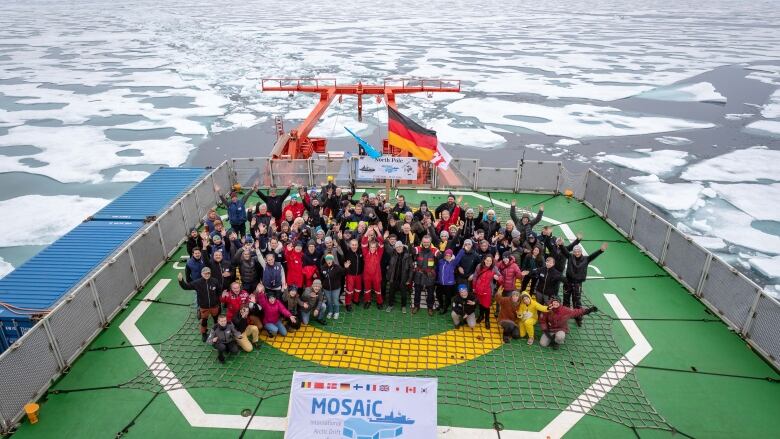Expedition to North Pole paints picture of Arctic climate change
2020 has been record-breaking for the Arctic climate, writes meteorologist Bradlyn Oakes

Standing on the North Pole a feat not many can say they have accomplished.
It's a harrowing journey, typically filled with icy seas, cold temperatures and unpredictable conditions,but one that has fascinated humanity, scientists and explorers alike.
As Markus Rex, the leader of the MOSAiC expedition puts it:"It really has been fascinating to stand at the North Pole, the upper end of our planet. The point where all the longitudes and all the time zones meet."
The MOSAiC expedition thebiggest and most complex expeditioneverattempted in the central Arctic by researchers from several nationsarrived to the North Pole in just six daysthis month, making their way from near Greenland via an unusual route.
"Typically we avoid that region because it's typically covered by thick sea ice. It's hard to break through that region with an icebreaker, but we had seen on satellite images that the ice concentration in that area was really, really low this year," said Rex.
Turns out there were large areas of open water, and they didn't have to break ice at all afirst hand look at what is happening in the Arctic this year.
Arctic warming twice as fast
This year has certainly been a record-breaking one for the Arctic climate-wise, from scorching heat to low sea ice extent.
This year alone in the Arctic we're seeingtemperatures sky rocket in the Arctic Circle, another year of record low ice coverage and the collapse of Canada's last fully-intact ice shelf the Milne Ice Shelf on Ellesmere Island.

The Arctic, in many ways, is ground zero to observe the effects of climate change. Current modelling suggests it is warming twice as fast as the rest of the planet and the impacts of rising global temperatures are often seen on a larger scale.
The impacts are easy to measure and explain in numbers,but they are often difficult pictures to paint.
It's hard to visualize a 38 C day in Siberia, or a loss of sea ice when we still have 5.15 million square kilometres of ice coverage today (roughly the same size as the Canadian territories and Ontario combined).
First hand observations of the changing Arctic
But for a group of scientists, the impacts are seen and documented first hand.
They are out in the middle of the Arctic Ocean, actually on the ice, completing the MOSAiC Expedition.
Equipped with modern instrumentation, they are drifting and sailing aboard the icebreaker RV Polarstern, and have been for the last year, with their journey ending in October. When it is complete they will have seen all phases of the Arctic ice cycle, from freezing to thawing.
- Looking for more weather news?Keep up to date with Bradlyn's Blog.
Their research vessel carries equipment to monitor over a hundred observations a day. From the temperature on the ice, to the condition of the snow, they are studying all aspects of the Arctic climate system for the first time.
The main goal being to get a picture of how the climate system in the Arctic works and what rising global temperatures and emissions will do to it.

"Pretty much all we have measured in the expedition so far are measurements that have never been taken before in the Central Arctic, that really contributeto a much more larger, more robust prediction of how the Arctic climate will respond to the emission of greenhouse gases," said Rex.
Predicting what the climate will do
Currently there aremajor variations in the climate models in the Arctic, some predicting ice-free summers in the next few decades, some by the end of the century.
The observations made by the MOSAiC team will have impacts on the climate models and predictions going forward.
The Arctic is considered the refrigerator of the planet, and what is happening there often impacts both the climate and immediate weather through the rest of the planet.
Having accurate climate modelling will help project and hypothesize what will happen in the future, not just for the Arctic sea ice, butfor the weather around the globe.












_(720p).jpg)


 OFFICIAL HD MUSIC VIDEO.jpg)
.jpg)



























































































